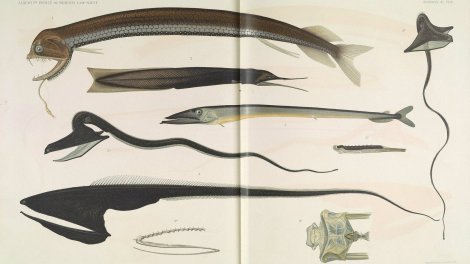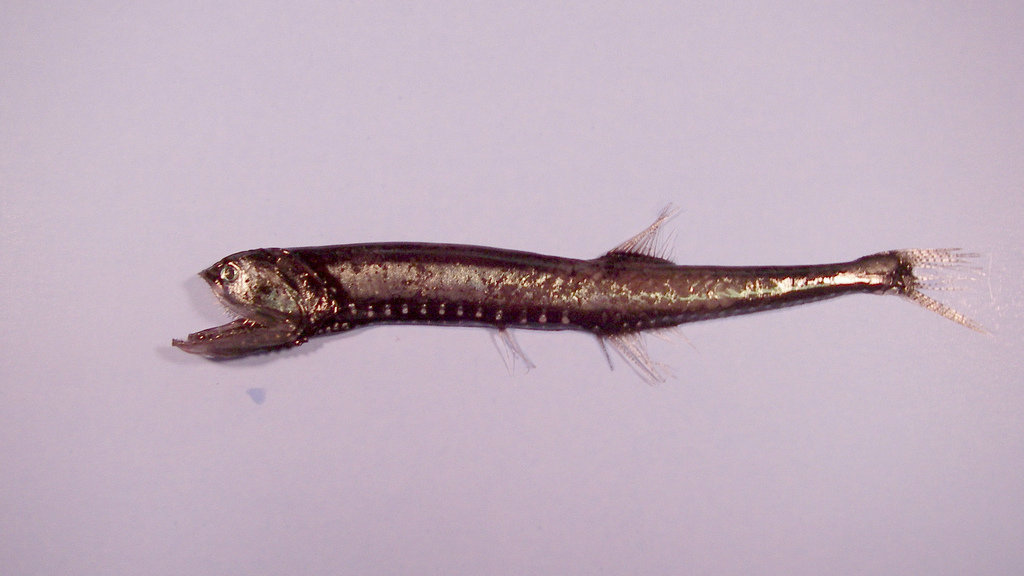
NOAAYum, elongated bristlemouth.
Bristlemouth à la beurre. Miso-seared mola mola. Lanternfish tartare.
If you’ve never seen these things on a menu, that’s probably because humans don’t generally catch or eat the denizens of the mesopelagic zone, that slice of sea about 656 to 3,280 feet below the ocean surface (also known as 200 to 1000 meters, which is much easier to remember). Lying just below the pelagic, the top layer of the open sea where most of the fish we’re familiar with live, the mesopelagic is apparently much more lively than we thought.
A paper published last month in the journal Nature Communications revised the estimate of biomass in this “twilight zone” of the ocean up from 1 billion tons to more than 10 billion — meaning these deep-dwellers actually make up something like 95 percent of the total fish in the sea.
This might sound like good news — lots more fish! — but it’s not nearly as good as some news outlets would have you believe. The right-wing blog Powerline optimistically asserted that “maybe overfishing of tuna won’t turn out to be quite the crisis we thought it was,” while The National Review’s Greg Pollowitz told us to stop worrying about ocean pollution since deep-water “deserts” under trash gyres turn out to be chock-full of fish. Even Popular Science overplayed the positive angle in its subhead: “Good news for fish. And humans who like fish.” (To be fair, a caveat followed in the piece itself: “This study doesn’t have much relevance for the issue of overfishing, which is an enormous and still growing problem.”)
I like fish, but I don’t expect to be picking dragonfish bones out of my teeth anytime soon. Deep-sea biologist Andrew David Thaler points out that media coverage of this study has distinctly neglected context — namely that, while this news teaches us a lot about the mechanics of the open ocean food chain, and may even explain why the sea is so good at absorbing our extra carbon, it really has little to bring to the human dinner table. Yes, there are a lot of (weird) fish out there, but that’s not a good excuse to keep dumping plastic in the Pacific or fishing bluefin tuna to extinction.
Not to mention that mesopelagic fish have been undercounted precisely because they are extraordinarily good at evading the trawl nets sent down to survey them. (So don’t get too excited about plundering this untapped food source, at least not yet.) The new research was done with sonar instead — harder to dodge that sound wave, huh, myctophids?
If these 10 billion tons really do make up 95 percent of all fish, that leaves only 510 million tons accessible to us humans — including all of our commercial fisheries. To put that in perspective, the World Bank’s 2005 estimate of all the large fishing vessels in the world suggests these high-tech boats are capable of catching more than 400 million tons of that a year. (Luckily for the rest of us, they don’t.)
So as tempting as it is to make a joke about there being plenty of fish in the sea, clearly that point needs no emphasizing.

Biodiversity Heritage LibraryThis is not a cookbook.




